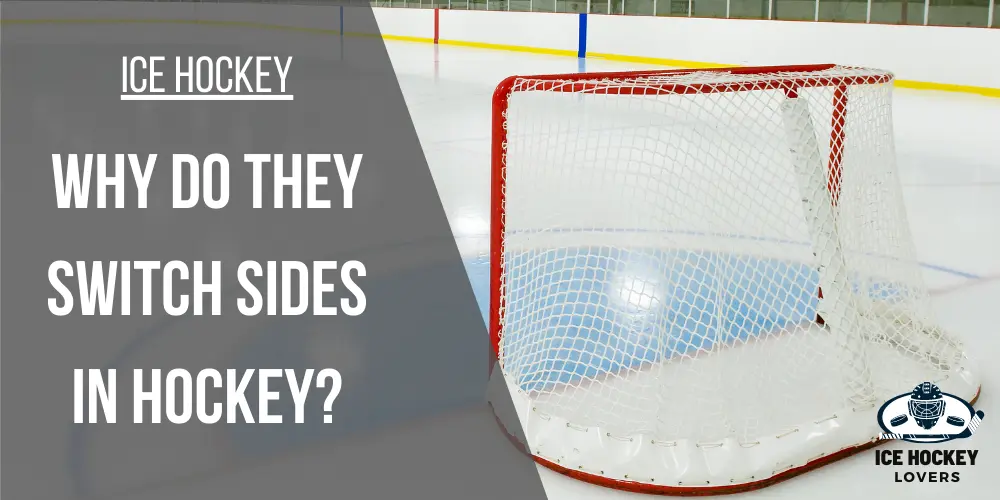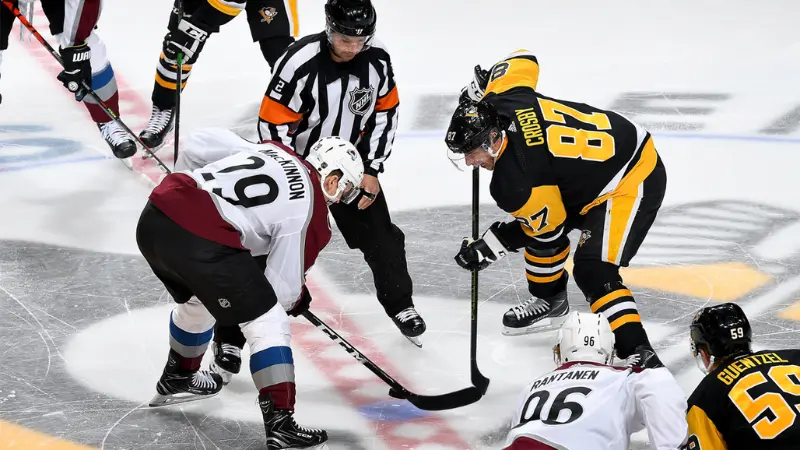Why Do They Switch Sides in Hockey? [Reason Explained]

Whether you are an old fan of hockey or came into the fandom recently, you have always wondered about the players switching their sides while playing. This switching takes place very frequently and mostly at random periods.
Switching sides in ice hockey has been there long since it was played on open grounds like canals and ponds. But now, changing sides in the second period creates a long change for players, leading to more scoring chances. Also, an excellent way to give fans a better experience of watching their home or favorite team shooting the puck at the opposing team’s net.
Table of Contents
History of Switching During Game
This practice of changing the side came into being in probably the late 1800s or early 1900s when people played the games in outstations like canals and ponds rather than indoors.

Conventional hockey was played in rounds of two, not like three now. Additionally, the games were planned to play outside, and it makes sense that the players used to switch sides (this will be discussed further in detail). If ever you had the experience of playing hockey, you have noticed that it becomes hard to move in the fast winds. Like football, variables like sunshine and wind can favor one team. Like football, switching sides in hockey also plays an essential part in scoring.
Over time, ice hockey got the advantage of indoor matches. And it became necessary to maintain the ice on the field to a specific condition. Thus, the cleaning of ice required at least two sessions in one game because three cleaning sessions were too much, but one cleaning session was too few. That is why the players switched sides between games and ended up with three periods of play and two cleaning sessions.
Positions Of Player
The player’s position according to a specific pattern is determined by his role, whether he is a defenseman or a forward player. Defensemen are positioned in groups of two, and forward players are placed in groups of three. The coaches decide the formation of the line while keeping in mind the special rules. Thus, whenever any line member switches out, all the other members also switch sides in the field.
Short Boost of Energy

One of the main reasons to switch sides is; for a quick and immediate energy burst when they enter the ice rink. Ice hockey is famous for its fast pace, and it is sometimes called the fastest game on the planet, Earth. Also, it is different from other games where the players get the chance to pull out their energy. So, when the players need a fast boost in their power to move faster, they tend to switch sides. That can also be a reason for ice hockey falling under anaerobic sport. Therefore, to maintain the time of their active phase, which is probably only forty-five seconds on average, the players need to switch sides. Otherwise, they will slow down in speed and wits.
Switching Relates to Increasing Scoring
The phenomenon of staying at a distance from the goalie in the ice ring is known as long change. This phenomenon allows the forward players and the defensemen to come to the spots from where the players can try to score a goal. Thus, this technique helps the players alter their roles and switch in the whole ice rink.

This switching also helps the players to catch their breath when they are at the long change and are tired from skating. Moreover, they get tired of the opposite teams, which kept chasing the puck for a long. To tackle the tiredness, the players need to switch; otherwise, as a consequence of being consistent, they may lose the puck. So, to sum up, the ideology, we can say that the scoring capacity increases when the switching happens.
The Ice Field is Crowded
This phenomenon is called “many men on the ice” in which the team members are very far from the puck, or they lose track of their substitute. Additionally, they make line changes for a very long. Then the referee can dump that team with the penalty of ‘many men on the ice’ Before their successor can enter the field, each player who exits the field of play during play needs to be within five feet of his team to avoid the penalty. A two-minute minor penalty will be assessed if any player touches the puck or interferes with the play just before replacement is done.
Players Change off When Seems Safe
Players will shift between the team in hockey matches when the opponents start chasing the puck and trying to snatch it from them. For example, it might happen that two groups of two opposite teams came forward with one as highly offensive, but the others are defensemen. This situation is known as a bad matchup. It is most probably possible that the opposing team is more energetic than you, and they beat you up very hard. So, it’s better for you to switch sides in that situation.
Switching Sides for the Fans

We assume that overtime is not considered in the game, and the game has only three periods. During the two intervals of the match, the home team is expected to shoot in all the nets, and in the last interval, they are free to use any network. It is not considered suitable for the customers that pay a lot for the matches because they have the right to see the puck going into their closest net. It also enhances the excitement and enjoyment of the audience when they see a goal themselves. So, the layers switch sides to ensure everyone is enjoying the match and the game looks in harmony. Moreover, the fandom is also essential for the players and NHL to maintain, and they try to goal in every possible net they have on an ice field.
Conclusion
To sum up, all the arguments that have been stated above, side switching in ice hockey is very important for the team players. It might seem to be weird but that is not the actual deal. The switching has many logical meanings. A 45 second shift may be all a player can tolerate before requiring a second on the bench if they are playing hard and skating fast. Because these shifts are so brief, a team may rotate between their finest players and play them all while at their best. This keeps all players energized, so when it’s time for them to get on the ice, whether for their turn in the rotation or because their coach wants to play a plan, they’re ready to give it all. So, while there are historical reasons for teams switching sides, the main motive is the in-game benefits.
If you like this article, drop thumbs up in the comment section below!

Who is Austin Taylor?
Meet Austin Taylor, your go-to source for everything ice hockey! With a passion for the sport that’s as deep as the ice itself, Austin Taylor brings you concise, expert insights and nitty-gritty details on all things hockey. From gear reviews to strategy breakdowns, Austin Taylor is your trusted guide to navigating the exhilarating world of ice hockey. Get ready to lace up your skates and dive into the game with Austin Taylor as your ultimate companion.



